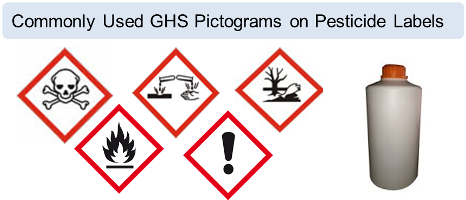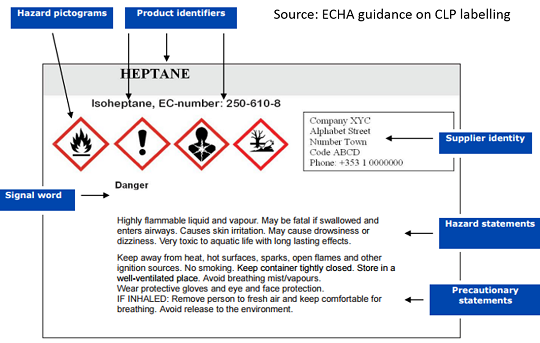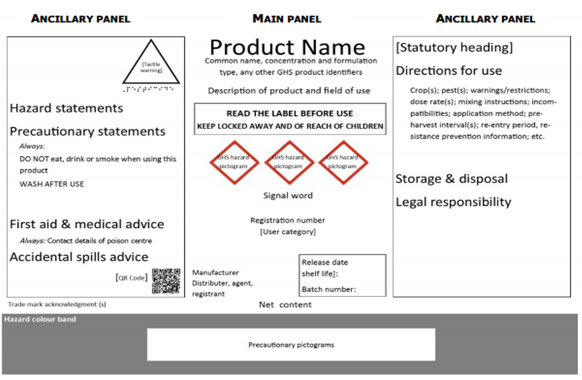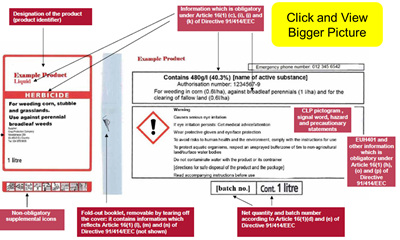GHS and Pesticides 2019
Little Pro on 2016-01-06
It is generally expected that the Globally Harmonized System of Classification and Labelling of Chemicals (GHS) will be adopted for pesticides. The biggest impact of GHS on pesticides will be pesticide classification and product labels. While GHS has been adopted for industrial chemicals in workplace by a significant number of countries, many of them still follow the FAO Guidelines on Pesticide Registration and the FAO Guidelines on Good Labelling Practice for Pesticides (rather than GHS) to carry out pesticide hazard classification and prepare pesticide labels. In this article, we have analyzed how GHS may impact pesticide labelling and classification and analyzed the current situation of GHS adoption in pesticides sector.
GHS and Pesticides Classification
GHS uses hazard class and hazard category to describe the nature and severity of chemical hazards. There are currently 29 hazard classes in GHS, among which the following classes are commonly seen on pesticides.
- Flammability;
- Acute Toxicity;
- Skin Corrosion/Irritation;
- Serious Eye Damage/Eye Irritation;
- Skin/Dermal Sensitization;
- Acute and Chronic Aquatic Hazards.
It is expected that chemical classification criteria for above hazard classes will be introduced for pesticides. It shall be noted that there is no hazard class for terrestrial animals (e.g., bees, mammals) in GHS. Different authorities may consider adding extra hazard classes for terrestrial animals when adopting GHS for pesticides.
The following GHS pictograms would be the most commonly used on pesticide labels in the future.

GHS and Pesticides Labels
A GHS label can also be used for pesticides after slight modification. A typical GHS label for an industrial chemical includes the following basic elements:
- Product identifier: Chemical identities of a substance or hazardous ingredients in a mixture;
- Supplier identification: The name, address and telephone number of a supplier;
- Signal word: Danger or Warning;
- Hazard pictogram: conveying different types of chemical hazards;
- Hazard statements: standardized and assigned phrases that describe the hazard(s) as determined by hazard classification;
- Precautionary statements: standardized phrases that describe measures to minimize or prevent adverse effects;
An example of a GHS label for an industrial chemical can be found below:

In general, active ingredients, bulk pesticide formulations destined for reformulation, repackaging or disposal, or other pesticide formulation components are considered as industrial chemicals if they are not intended for direct use. It is recommended that classification and labelling of these compounds follow the GHS. Workers will reply on GHS labels for hazard information.
Similarly, the contents and layout of safety data sheets (SDS) that may accompany pesticide shipments or consignments should follow the provisions of the GHS. However, the registrant must ensure that the SDS which accompanies the product is consistent with the approved label. Furthermore, the UN Recommendations on the Transport of Dangerous Goods – Model Regulations provide specific guidance on labelling and marking for transporting pesticides that belong to dangerous goods.
It is generally expected that a GHS pesticide label for end use products will need to include additional information. The extra required info may include instructions for use, content of AIs, requirements for personal protective equipment, re-entry intervals, and first aid statements.
Important Note:
Since pesticides are usually supplied in small packages, a label may not be big enough to include all GHS relevant info. Please read this good presentation on GHS labelling considerations for small containers given by Yunbo Shi at SCHC Meeting.
For some countries, risk-based GHS labelling may be adopted for end-use pesticides instead of regular GHS labelling, which is usually hazard-based.
Adoption of GHS for Pesticides in the United Nations
- The revised Guidelines on good labelling practice for pesticides (2015) has incorporated the main elements of the GHS, and provided advice on how to apply the provisions of the GHS to pesticide labelling. A sample GHS label for end use pesticide can be found below.
- The World Health Organization (WHO) has updated the Recommended Classification of pesticides by hazard to take account of the GHS criteria. Its latest edition (2009) uses revised classification criteria which take account of the GHS categories for acute oral and dermal toxicity;

Adoption of GHS for Pesticides in EU/EEA
- Has adopted GHS for plant protection products and biocidal products via CLP Regulation (EC Regulation on Classification, Labelling and Packaging of Substances and Mixtures, EC 1272/2008);
- Plant protection products and biocidal products must be classified and labelled in accordance with GHS/CLP from 1 June 2015 (1 Dec 2010 for pure AIs);
- Additional labelling info required: the name and amount of each active substance, net quantity, batch number, the type of action of the product, the type of preparation, the authorized uses, the sentence "Read accompanying instructions before use" and directions for safe disposal of the product and its packaging;
- EU pesticide GHS label: Please see the picture given below.
- Source: ECHA Guidance on CLP Classification and Labelling (page 45);
Adoption of GHS for Pesticides in Turkey
- Has adopted GHS for pesticides via Turkish CLP regulation;
- Pesticides must be classified and labelled in accordance with GHS/CLP from 1 June 2016 (1 June 2015 for pure AIs);
- Source: Turkish CLP Regulation in Turkish.
Adoption of GHS for Pesticides in Australia
- Has adopted GHS for pesticides;
- GHS hazard classification and safety data sheets are required in Part 6 data package when applying for registration approval;
- Source 1: http://apvma.gov.au/node/1027;
- Source 2: http://www.commerce.wa.gov.au/ghs_of_classifying_and_labelling_ch.pdf;
Adoption of GHS for Pesticides in USA
- Has not adopted GHS for pesticides yet;
- Is considering GHS for pesticides;
- A sample pesticide label with GHS elements has been drafted by EPA for consideration;
- Source: http://www.epa.gov/pesticides/international/ghs/implement.htm;
Adoption of GHS for Pesticides in China
- Has not adopted GHS for pesticides yet;
- Pesticides do not need to be labelled in accordance with GHS labelling standard GB 15258 - General Rules for Preparation of Precautionary Label;
- Is revising its guidance on pesticide MSDS preparation which is aligned with GHS;
- Source: GB 15258;
Adoption of GHS for Pesticides in Japan
- Has not adopted GHS for pesticides yet;
- Still follows old pesticide classification and label requirements;
- Source: https://www.acis.famic.go.jp/eng/shinsei/index.htm.
Adoption of GHS for Pesticides in Korea
- Has not adopted GHS for pesticides yet;
- Source: ftp://ftp.fao.org/docrep/fao/012/i0972e/i0972e01.pdf.
Adoption of GHS for Pesticides in Singapore
- Has not adopted GHS for pesticides yet;
- Source: https://www.wshc.sg/files/wshc/upload/cms/file/2014/GHS_FAQ_2014.pdf
Adoption of GHS for Pesticides in Other Countries
- Philippines: planned, deadline not clear;
- Thailand: planned, deadline not clear;
- Vietnam: planned, deadline 2020.
Having Questions?
We do not provide consultancy services. If you have questions or need any help, please contact our sponsor. You may also find an expert in CSP business directory below. If you are a consultant, you may get yourself listed in CSP business directory (free) or sponsor this page to leave your contact info on this page..

Tags: Topics - GHS, GHS Basics and Tutorials
